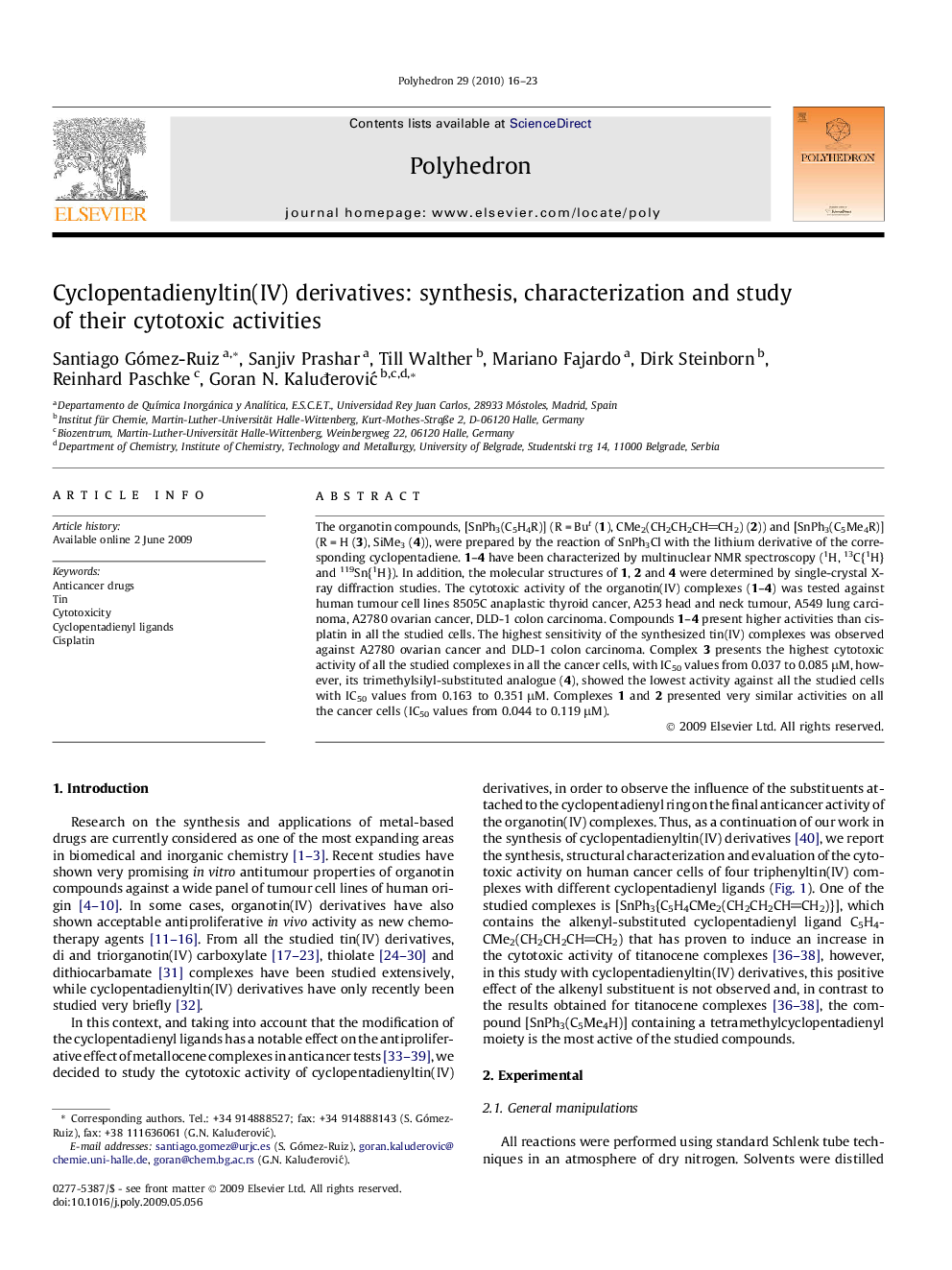| Article ID | Journal | Published Year | Pages | File Type |
|---|---|---|---|---|
| 1339472 | Polyhedron | 2010 | 8 Pages |
The organotin compounds, [SnPh3(C5H4R)] (R = But (1), CMe2(CH2CH2CHCH2) (2)) and [SnPh3(C5Me4R)] (R = H (3), SiMe3 (4)), were prepared by the reaction of SnPh3Cl with the lithium derivative of the corresponding cyclopentadiene. 1–4 have been characterized by multinuclear NMR spectroscopy (1H, 13C{1H} and 119Sn{1H}). In addition, the molecular structures of 1, 2 and 4 were determined by single-crystal X-ray diffraction studies. The cytotoxic activity of the organotin(IV) complexes (1–4) was tested against human tumour cell lines 8505C anaplastic thyroid cancer, A253 head and neck tumour, A549 lung carcinoma, A2780 ovarian cancer, DLD-1 colon carcinoma. Compounds 1–4 present higher activities than cisplatin in all the studied cells. The highest sensitivity of the synthesized tin(IV) complexes was observed against A2780 ovarian cancer and DLD-1 colon carcinoma. Complex 3 presents the highest cytotoxic activity of all the studied complexes in all the cancer cells, with IC50 values from 0.037 to 0.085 μM, however, its trimethylsilyl-substituted analogue (4), showed the lowest activity against all the studied cells with IC50 values from 0.163 to 0.351 μM. Complexes 1 and 2 presented very similar activities on all the cancer cells (IC50 values from 0.044 to 0.119 μM).
Graphical abstractFour different cyclopentadienyltin(IV) derivatives have been synthesized and structurally characterized. The cytotoxic activity of these compounds was tested against human tumour cell lines, observing cytotoxic activities of up to 100 times higher than cisplatin and up to 5000 times higher than other related tin(IV) compounds.Figure optionsDownload full-size imageDownload as PowerPoint slide
